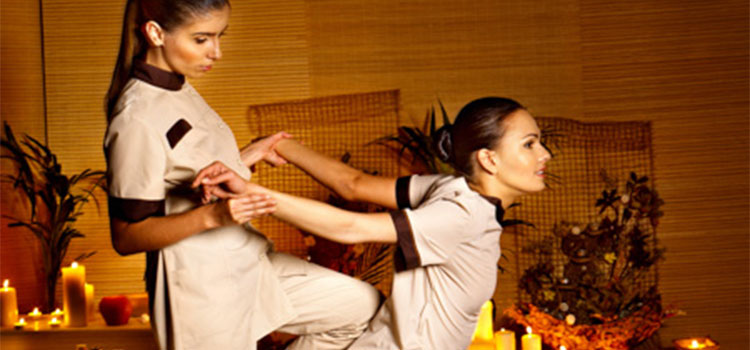Other Massage Related Articles
Breema® Bodywork Careers and Programs
Learn About Breema® Massage Schools and Careers

The healing art of Breema® bodywork originated generations ago in the small Kurdish village of Breemava.
The Breema® approach focuses on the balance of energy within the mind and body, and connecting with our own natural vital energies to encourage wellness.
This is accomplished through a combination of nurturing touch, guided stretching, supported postures, and rhythmic movements.
Breema® bodywork is generally conducted in partnership with a practitioner who has undergone specialized training, sometimes in conjunction with more conventional massage training.
Career Overview
The practitioner is critically important in Breema® bodywork, which teaches that the patient can be most effectively helped by a practitioner who is truly present with them, and comfortable in his or her own body movements.
The practitioner guides the recipient through a series of exercises done fully clothed on a mat or padded floor.
These exercises utilize the Nine Principles of Harmony. “No Force” and “Body Comfortable” are two of these principles; practitioners do not push the recipient into position, but rather use more nurturing methods such as leaning, rocking, or cradling the recipient.
Changes in position are encouraged using natural body weight as the catalyst. Breema® bodywork may be conducted in group classes or through private sessions.
Training and Education
What You’ll Study in Breema® School
Besides teaching the underlying philosophies of Breema® bodywork, Breema® training also requires some study of anatomy and physiology. You’ll practice the techniques of Breema®, from basic exercises and sequences to more complex treatments, and learn how to both give and receive Breema® treatments.
Average Length of Breema® Bodywork Study
A Breema® Practitioner Certificate requires 165 hours of study. However, if you are pursuing Breema® training as part of a more comprehensive massage training program, you can expect most programs to range from 500 to 1,000 hours.
Breema® Bodywork Certification
If you plan to practice Breema® bodywork in a state that requires licensing of massage and bodywork practitioners, you may need a certification from the National Certification Board for Therapeutic Massage and Bodywork (NCBTMB). The NCBTMB credential requires at least 500 hours of training as well as passing a standardized exam.
Career Outlook
Although Breema® bodywork is one of the lesser-known healing arts, career opportunities are generally very good in the field of massage therapy.
The U.S. Bureau of Labor Statistics projects a 18.3% job growth rate for massage therapists through 2032, which is much faster than average for all jobs, as more and more people learn about the benefits of hands-on healing methods.
Breema® Salary
Earnings vary greatly in the bodywork field. Practitioners of Breema® bodywork generally charge individual patients between $40 and $100 a session; rates are usually lower for group classes.
With most massage therapists working 15 to 30 hours per week, those numbers can quickly add up. You can research massage therapist salaries by state below:
Is a Breema® Career Right for You?
Unlike the physically demanding nature of many other forms of bodywork, the practitioner of Breema® bodywork is just as likely as the recipient to end a session feeling refreshed.
Bodywork practitioners with an interest in the Breema® approach should be open to the philosophy that healing is a matter of tapping into our own bodies’ vitality rather than merely “fixing a problem.”
Being comfortable with direct, prolonged, but gentle physical contact is also important. The ultimate benefits include physical and mental relaxation as well as increased flexibility, self-understanding and well-being.
Sources: MassageTherapy.com, NCBTMB, The Breema Center, The Breema Clinic, Yoga Journal.
